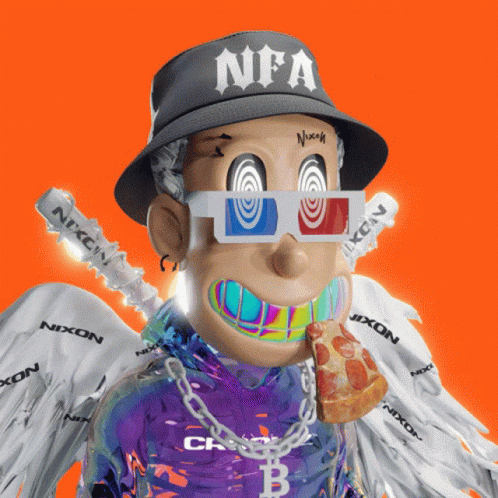NFTs, or non-fungible tokens, have made it to the public approximately three years ago. Shortly after that, the NFT craze began, which lasted for around a year; from the end of 2021 through the end of 2022. NFT Digital collectibles were perceived as something new, fresh, and promising. Famous people were no strangers to the craze either; Justin Bieber was the celebrity who made the larges NFT purchase equivalent to $1.3 Million USD. Besides, it was kind of the chance for those who missed their opportunity to buy Bitcoin low to now finally invest in something that is at its beginning.

Read more: Embracing the NFTs: A Journey into Digital Ownership
For about a year, NFTs were actively traded, with Ethereum being the chain for the majority of NFTs. However, since late 2022, the market appears to be deeply dormant, if not dead at all, with the levels being just around the time before the initial surge in NFT popularity. Looks like after the initial craze, everyone realized that they had no idea why NFTs were needed. It is not a classic crypto coin with a large supply that can be traded, but rather a unique asset. And what are you going to do with that? Well, there’s actually a lot that can be done, but to make more people realize the full NFT potential, we need a bit more time and explanation.
NFT Market Cooling
What happened to the NFT market is a result of a complex interplay between a huge number of factors. On the one hand, many notions in society and economy happen in cycles, and the crypto world is no different. To be honest, it was clear that this was going to happen; it was just unclear when exactly.
On the other hand, the inevitable fall of NFT prices was catalyzed, on the one hand, by the fall of FTX exchange, and on the other hand by the publicity given to crypto scams. All that has ripped the crypto world off its hard-earned trust. In the end, NFT investment was becoming less and less attractive, significantly losing their values.
However, the main reason behind all of that happening was that NFTs were just advertised as blockchain-based digital collectibles. In fact, the fact that an NFT is stored on blockchain calls for a lot more cases of NFT use than just a picture you own. Most of them offer users what NFTs have not been offering before, that is, real-life use.

Real World Applications of NFT
First and foremost, the real advantage of NFT is that it is a piece of data encrypted on blockchain, which makes it super secure. So, the most valuable cases of NFT use in the future will most likely revolve around proof of ownership and its transfer by tokenizing physical assets. That way, NFTs can serve as ownership records of anything you own and want to sell. One day, it may be possible to sell or buy a house by just transferring the NFT. Keeping in mind that PayPal, for instance, has already applied for a patent for NFT purchase-and-transfer system, this scenario is not unlikely.
On the other hand, some companies try to do the contrary and bring NFT into the real world. With the countless NFT collections, most of which lack artistry and uniqueness, to say the least, some of the most valuable collections were brought to life by famous brands. Some examples would be Doodles by Crocs, and Pudgy Penguins sold on Amazon.

Yet another valuable use of NFT that is brought about by blockchain is certificate of authenticity. This can be achieved by minting a piece of data, that is, encrypting it on blockchain, so that it cannot be replaced or forged. By doing this, an NFT owner can show that the collectible they own is truly a collectible, not a cheap fake.
Artists, Collectors, Enthusiasts – Shaping the Future of NFT
As NFT has rapidly fallen out of the hype episode, it now requires more sophisticated use and daily applicability. The good news is that there is plenty of room for improvement; the industry is just not there yet. Everyone is moving in the right direction, but we don’t know when the point will be reached.
If we look at NFTs as either digital collectibles, pieces of art, or certificates of authenticity, the creative sector consisting of artists, collectors, enthusiasts, and any other stakeholders may actually breathe a new life into NFTs. Let’s face it; only a minority of NFT collections are valuable from the artistic point of view, let alone are interesting as collectibles. The role of artistry in this case would be promoting real digital art more than just hyping on the crypto theme.
Conclusion
Although there are variable expert opinions and estimations, NFT is more likely to actually extend beyond the case of owning unique images and start being focused on data safety and proof of ownership. It would be such a waste of technology to rely on the fact that silly pics (and let’s be honest, this description is true for 99% of all NFT collectibles out there) can be sold for thousands of dollars just because they are encrypted on blockchain. Let’s get real valuable data encrypted and get more use for NFT. Perhaps, one day even national IDs or travel passports can be NFTs and stored on blockchain. I wonder, what country will be the first to implement that.
More Info:
- NFTs are High: Turning Psychedelic Mushroom Certificates into Digital Collectibles;
- What are dynamic NFTs? Use cases and examples;
- The SEC vs. NFTs: What You Need to Know.
It is unclear if NFT investment in collectibles would be an optimal solution and would bring the desired profitability in 2023. However, what can be predicted is that the future of NFTs is far more interesting than Milady or Bored Apes.

FAQ
Is the NFT trend dead?
Depending on what you call “NFT trend.” It is true that NFT collectibles are being sold at much lower prices and much less frequently than in 2022, and that the reduction has been immense. However, it doesn’t mean that NFT is dead as a notion. It is just waiting to be reborn.
Is there really a future in NFT?
Absolutely. The future of NFT is bright and happy. We just do not know what the predominant case of NFT use will be. Most likely, it will be more deeply rooted in the advantages that bitcoin and DeFi bring to the table, which is data security and protection. However, certain collectibles and the artistic use of NFTs in general may still be valuable in the future, and even more valuable than they are now.
Do people still invest in NFT?
Absolutely. People still buy NFTs in an expectation that their value will grow, and it still happens frequently. It is just that the market is a lot slower, and so is the growth.
Is NFT still profitable in 2023?
It can still be profitable, but among all investment opportunities that exist out there, NFT investment might not be the best choice if you are not sure that you are investing in an NFT that is just destined to increase in its value. At least this is the current situation, which is unlikely to change for the next couple of months.
Disclaimer: All materials on this site are for informational purposes only. None of the material should be interpreted as investment advice. Please note that despite the nature of much of the material created and hosted on this website, HODL.FM is not a financial reference resource and the opinions of authors and other contributors are their own and should not be taken as financial advice. If you require advice of this sort, HODL.FM strongly recommends contacting a qualified industry professional.





